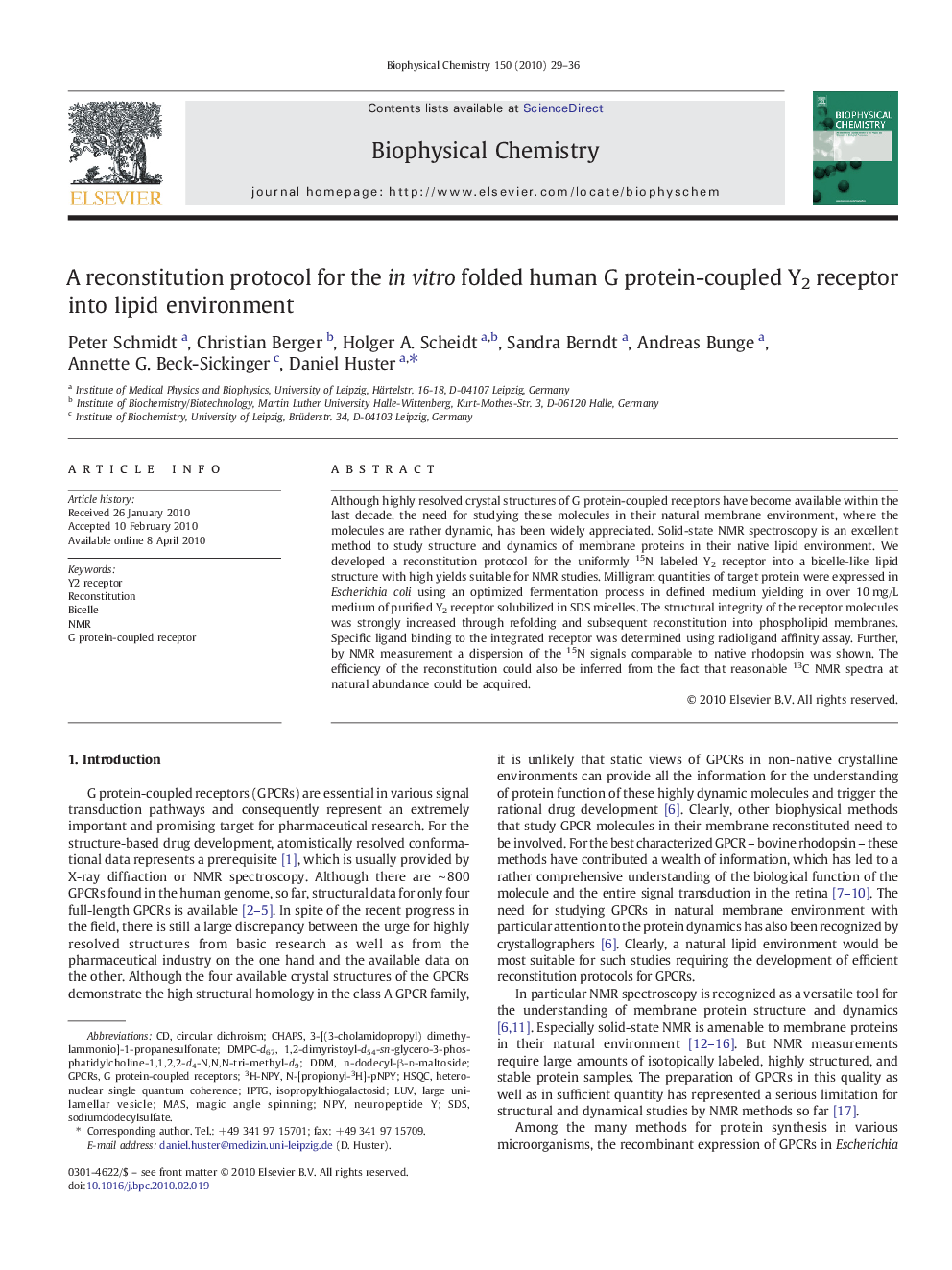| Article ID | Journal | Published Year | Pages | File Type |
|---|---|---|---|---|
| 5371367 | Biophysical Chemistry | 2010 | 8 Pages |
Although highly resolved crystal structures of G protein-coupled receptors have become available within the last decade, the need for studying these molecules in their natural membrane environment, where the molecules are rather dynamic, has been widely appreciated. Solid-state NMR spectroscopy is an excellent method to study structure and dynamics of membrane proteins in their native lipid environment. We developed a reconstitution protocol for the uniformly 15N labeled Y2 receptor into a bicelle-like lipid structure with high yields suitable for NMR studies. Milligram quantities of target protein were expressed in Escherichia coli using an optimized fermentation process in defined medium yielding in over 10Â mg/L medium of purified Y2 receptor solubilized in SDS micelles. The structural integrity of the receptor molecules was strongly increased through refolding and subsequent reconstitution into phospholipid membranes. Specific ligand binding to the integrated receptor was determined using radioligand affinity assay. Further, by NMR measurement a dispersion of the 15N signals comparable to native rhodopsin was shown. The efficiency of the reconstitution could also be inferred from the fact that reasonable 13C NMR spectra at natural abundance could be acquired.
